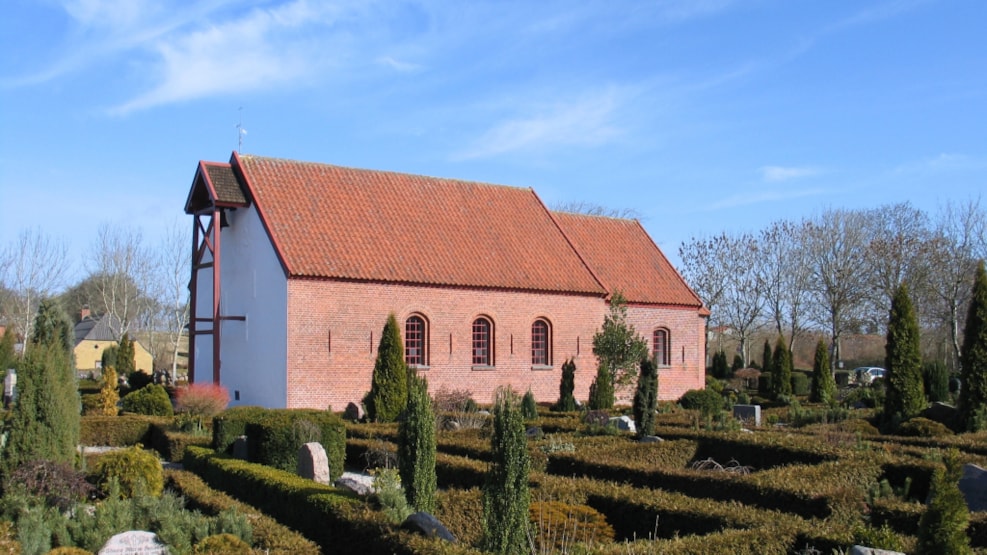
Dommerby Church
A visit to Dommerby Church is a journey through centuries of faith and craftsmanship – here, you encounter monk bricks, sacred art, and a bell with a royal inscription, all set in a landscape rich with tranquility and history.
Dommerby Church – A Timeless Sanctuary Between Lake and Fjord
Dommerby Church rises gracefully on a hillside between the former Tastum Lake (which dried up in the late 1860s) and Skive Fjord, serving as a spiritual and historical landmark along the old road between Skive and Viborg.
History and Architecture
Built in the Late Romanesque period using monk bricks.
The church remained largely untouched until 1880, when the south wall and apse were re-faced.
The whitewashed north wall, windowless and original, is well preserved.
In 1911, a new porch was added around the existing one, expanding it by half a meter.
Dommerby Church is towerless, with its bell hanging in a freestanding bell frame near the western gable.
The bell, cast in 1514, bears the inscription “Jesus Nazarenus rex iudeorum” – “Jesus of Nazareth, King of the Jews” – and is believed to be made by the same founder as Højslev Church’s bell.
Interior and Furnishings
The nave and chancel have exposed beam ceilings.
The original half-domed vault in the apse is intact, as is the round chancel arch.
In the mid-1700s, the altar table was fitted with a painted panel depicting the Gathering of Manna and Moses striking water from the rock.
The triptych altarpiece features paintings from the same period: the central panel shows the Last Supper, with Moses and Aaron on the wings.
The pulpit from 1751 displays coordinating images, while a set of altar paintings by Johannes N. Skov from 1858 also hangs in the church.
Churchyard and Local Roots
The cemetery reflects the mix of rural and urban life, with burial plots from the farms in Dommerby – including Dalsgård – and families from nearby Højslev Stationsby, which lies within the parish boundaries.